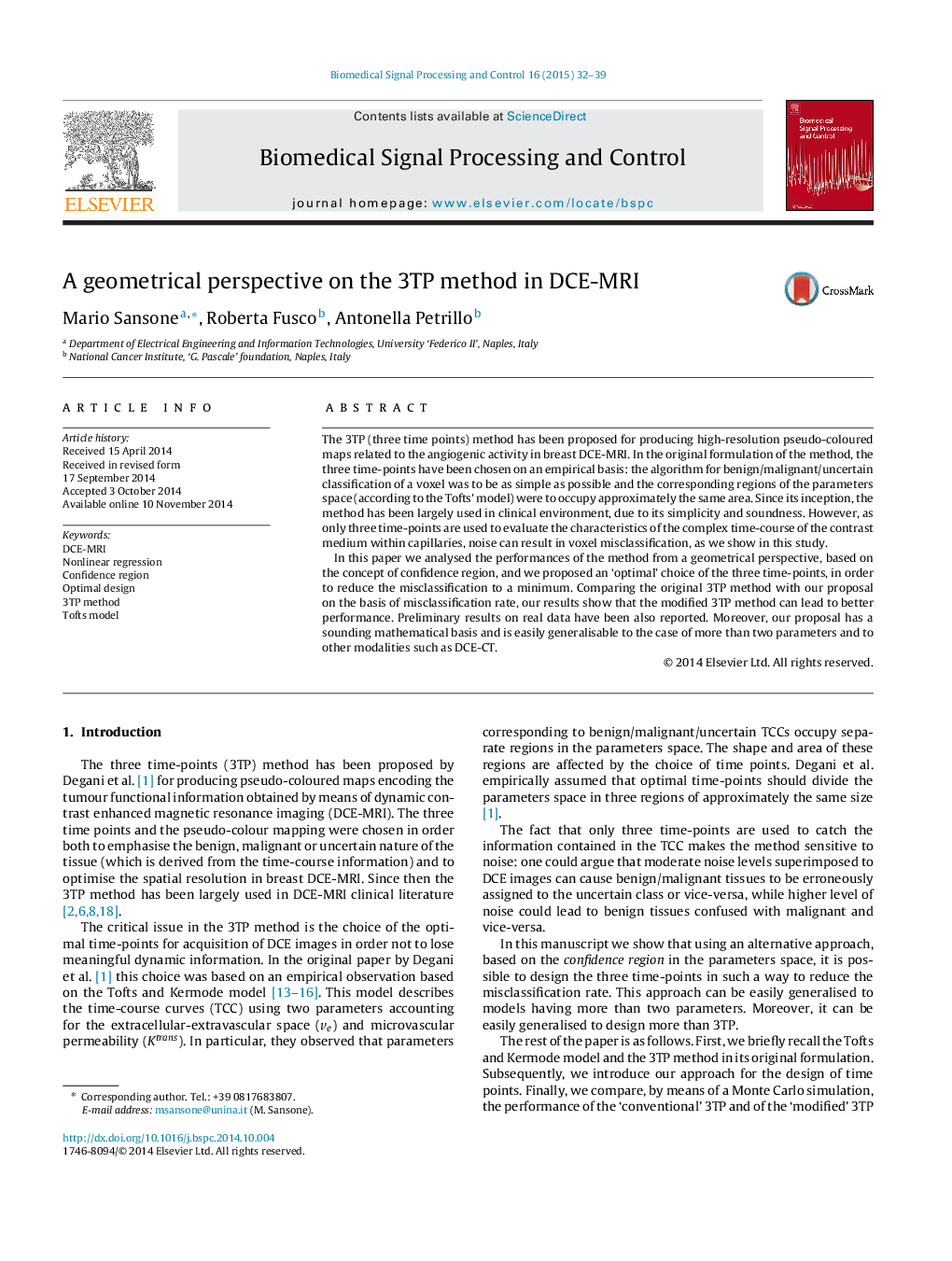| Article ID | Journal | Published Year | Pages | File Type |
|---|---|---|---|---|
| 557976 | Biomedical Signal Processing and Control | 2015 | 8 Pages |
The 3TP (three time points) method has been proposed for producing high-resolution pseudo-coloured maps related to the angiogenic activity in breast DCE-MRI. In the original formulation of the method, the three time-points have been chosen on an empirical basis: the algorithm for benign/malignant/uncertain classification of a voxel was to be as simple as possible and the corresponding regions of the parameters space (according to the Tofts’ model) were to occupy approximately the same area. Since its inception, the method has been largely used in clinical environment, due to its simplicity and soundness. However, as only three time-points are used to evaluate the characteristics of the complex time-course of the contrast medium within capillaries, noise can result in voxel misclassification, as we show in this study.In this paper we analysed the performances of the method from a geometrical perspective, based on the concept of confidence region, and we proposed an ‘optimal’ choice of the three time-points, in order to reduce the misclassification to a minimum. Comparing the original 3TP method with our proposal on the basis of misclassification rate, our results show that the modified 3TP method can lead to better performance. Preliminary results on real data have been also reported. Moreover, our proposal has a sounding mathematical basis and is easily generalisable to the case of more than two parameters and to other modalities such as DCE-CT.
